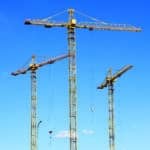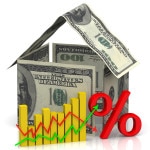by Banker & Tradesman | Nov 21, 2021
What to do now if you care about advancing the needs of the business community? What Boston needs now is for business to respect its vote and come together to expand the economy and equity in the city.

by Heather Beasley Doyle | Aug 16, 2020
In recent months, big national brokerages have stepped up diversity and inclusion efforts, aiming for personnel that more accurately reflect current American demographics. But many challenges lie ahead that are tied to the nature of the residential real estate industry.

by Steve Adams | Aug 16, 2020
In the Boston-area commercial real estate development, brokerage and architecture sectors, equity and inclusion efforts have been slow to gain traction despite a decade-long economic expansion and steady job growth.

by Diane McLaughlin | Aug 16, 2020
As more businesses become aware of how recruitment and employment policies have played a role in perpetuating the wealth gap, some local banks and credit unions are beginning to evaluate how internal policies and corporate cultures shape opportunities and career paths for people of color.
by Kenneth R. Harney | Apr 15, 2018
Americans are awash in record amounts of equity in their homes, posing the question for millions: So what do we do with it?
by Jim Morrison | Mar 15, 2018
In the fourth quarter of 2017, U.S. homeowners with mortgages (which account for roughly 63 percent of all properties, according to a 2016 American Community Survey) have seen their equity increase 12.2 percent year over year, representing a gain of $908.4 billion since the fourth quarter of 2016, according to a report released today from CoreLogic, a global property information provider.

by Kenneth R. Harney | Jan 21, 2018
It’s a big and confusing question for many homeowners in the wake of the December tax law changes: Are new interest-deductible home equity credit lines (HELOCs) and second mortgages now totally out of reach going forward?

by Jim Morrison | Dec 10, 2017
As single-family home values continue to soar across the commonwealth, homeowners are quickly building equity and borrowing against it.

by Peter Paul Payack | Dec 10, 2017
“We also have medical bills to pay off . . . want to buy shares of my left kidney? You’ll get dibs if your renal system ever goes pear-shaped.”
by Banker & Tradesman | Dec 8, 2017
U.S. homeowners with mortgages – roughly 63 percent of all homeowners – have collectively seen their equity increase 11.8 percent year over year a gain of $870.6 billion since the third quarter of 2016, according to a new home equity analysis from CoreLogic.

by Jim Morrison | Jun 14, 2017
U.S. residents with mortgages (roughly 63 percent of all homeowners) have seen their equity increase by a total of $766.4 billion in the year since the first quarter of 2016, an increase of 11.2 percent, according to a recent report from CoreLogic, a global property analytics firm.
by Banker & Tradesman | Mar 9, 2017
CoreLogic today released a new analysis showing that U.S. homeowners with mortgages (roughly 63 percent of all homeowners) saw their equity increase by a total of $783 billion in 2016, an increase of 11.7 percent.

by Banker & Tradesman | Dec 15, 2015
More than a quarter of a million properties regained...

by Banker & Tradesman | Sep 15, 2015
More than three-quarters of a million properties...














